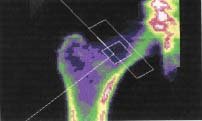Definition of Osteopenia
Definition of Osteopenia (or Thin bones). BACKGROUND: The term Osteopenia was formally introduced into vocabulary of the medical world in June of 1992 when the World Health Organization defined it as being a condition when bones are 1 standard deviation below that of the average 30 year old white woman.
Now if you are not a 30 year old Caucasian woman that may seem like an arbitrary definition. But there are reasons why this was selected for the standard and the FAQ (frequently asked questions ) below should answer the questions you might have about this particular Definition of Osteopenia.
FAQ Definition of Osteopenia
- Why did they pick a 30 year old white woman as the standard for a Definition of Osteopenia? Why should men and women in their 50's and 60's be judged against this standard?The reason has to do with the development of bone density in human beings.
- Caucasian women tend to lose densityof their bones at an earlier age than most other groups. Second, our bones go through a regular cycle duringour life spam. The bones of children grow very fast - that is why they grow taller. After the major growth in length has slowed, their bones continue to grow - but now it is in thickness and strength.
- This accelerated bone growth happens because the osteoblast of children (the cells that build bone) are more active than their Osteoclasts {the bones that remove old bone.) About the age of 30 - 32, their occurs a shift in the activity of our bone building/removing cells and Oseoclases, whose job it is to remove old bone, become more active. So it is around age 30 - 32 that most people experience their greatest bone strength.After that it is downhill. And since one of the aims of health care is to prevent fractures...and fractures are more likely to occur during a fall or injury if our bones are not at 'peak bone mass', the health experts decided to measure all bone density against the 'peak bone mass' numbers.

- How do they measure our bone density? Bone density is usually measured through a dexa scan. Dexa stands for ‘Dual Energy X-ray Absorptiometry’. Although there are other ways to measure bone density, the dexa scan is one of the most accurate. That is why it is so often used as a measure bone density and the Definition of Osteopenia or Osteoporosis. To find out more about this test and how it is done, go to Dexa scans - a test to measure bone density
- So, what test results mean I have Osteopenia?Dexa scan results are show in columns. The first column is listed as BMD and it gives your bone mineral density - the number of grams per centimeter of bone. There is a column marked T score shows and this is the one that shows your bone mineral density compares with women thirty years of age (see above) Scores with + values mean that you have denser bones than the standard. That shows really strong bones.Numbers between +1 and - 1 show that your bone density is "normal" - it compares well with the standard 30year old white woman.Scores between -1 and -2.5 indicate Osteopenia (thin bones). Anything less than -2.5 indicates you have lost so much bone density that you have Osteoporosis (porous bones).Third, there is often another column called, Z score It compares your bone mineral density with others of your own age. This may or may not be useful. If I am older and many of the women in my age group suffer fractures when they fall, what good does it do me to have bones as dense as women in my age group? I want stronger bones. I do not want to suffer fracture.
To read more about Dexa scans and Causes of bone loss as well as natural treatments for 'thin bones' go to
- Definition of Osteopenia and Osteoporosis
- What are the Causes of Osteopenia
- Natural treatments to Reverse Bone Loss
- Medications
You may find it very helpful to consult the Complete list of Topics on this site
